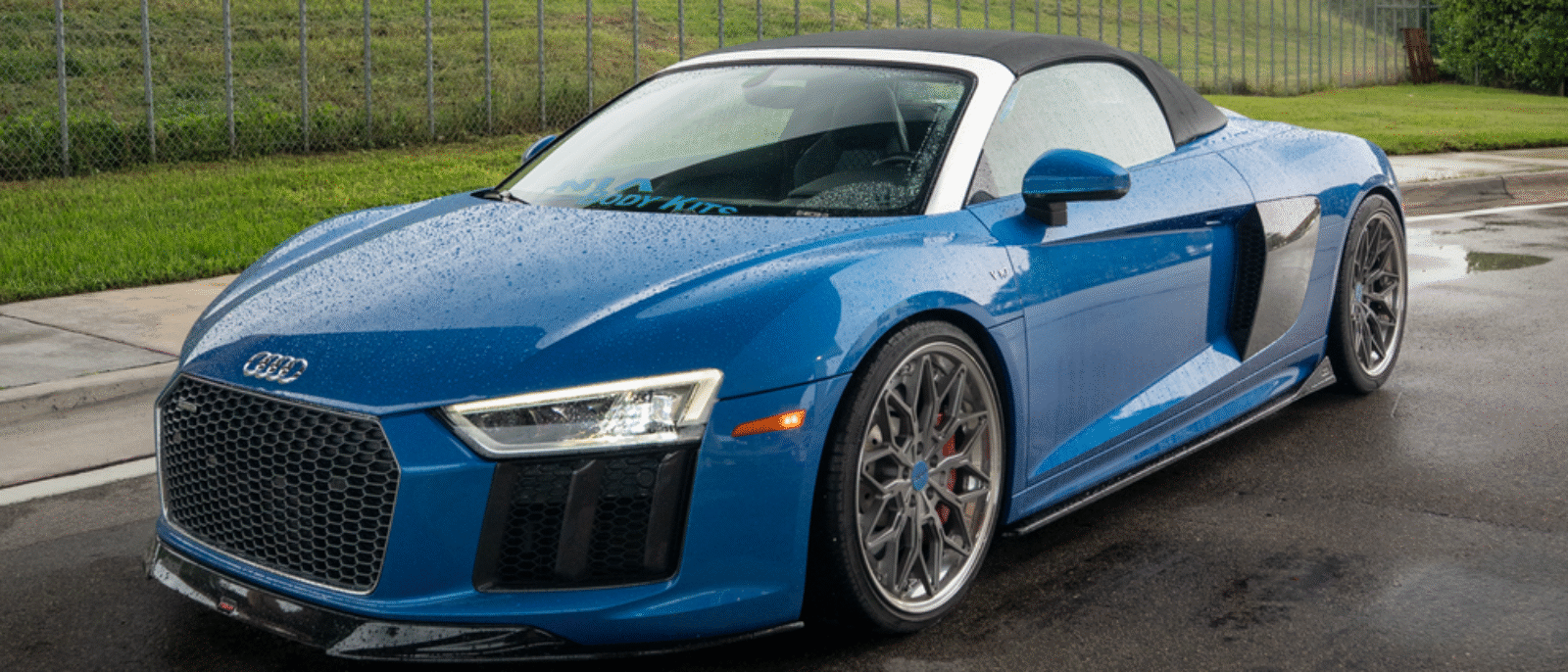Ode to The 2017 Audi R8
Specifics for 2017 R8
Here are some of the key specifications and details that illustrate how the car-body style is realized in practice for 2017:
Engine / Performance: The 2017 R8 comes with a 5.2-liter V10 engine. There are different power levels: ~540 hp in standard V10 versions (both Coupe and Spyder) and up to ~610 hp in the V10 Plus trims. Transmission: 7-speed dual clutch automatic (S tronic) transmission. Acceleration / Speed: The V10 Plus coupe can do 0-60 mph in about 3.2 seconds. Dimensions: Length ~ 174.3 in, width without mirrors ~76.4 in, height ~48.8 in. Wheelbase ~104.3 in. Weight: Varies by trim and roof version, but the Coupe is lighter than the Spyder. Some special trims (like RWS rear-wheel drive) reduce weight further.
Aesthetic & Functional Design Features
The R8’s body style is a blend of form and function. Here are some of the stylistic and performance-oriented design features tied to its body:
Sideblades: The R8’s distinctive side blades (on the Coupe) are both aesthetic and functional — helping with airflow, cooling, and giving the car a signature look. Aerodynamics: The front fascia, large air intakes, rear diffuser, underbody design, etc., are shaped to optimize downforce, cooling, and stability at high speeds. The body isn’t just about looks—it’s engineered for performance. Roof options: The Spyder roof is a fabric top that folds, which adds weight and slightly alters the body’s center of gravity, structural stiffness, and sound. Coupe versions are stiffer and lighter, typically sharper in handling.
Pros & Trade-Offs of This Body Style
Like any design choices, the body style of the 2017 R8 brings both advantages and compromises.
Advantages:
Exotic, high-performance appearance and presence. The proportions (low roof, wide stance, mid-engine layout) are immediately striking. Excellent handling and responsiveness, due to mid-engine layout, rigid structure, good weight distribution. Two variants (Coupe & Spyder) offer choice: fixed roof for stiffness and speed; open-top for style, experience.
Trade-Offs:
Weight: The convertible Spyder is heavier and less stiff than the Coupe, which can slightly reduce responsiveness. Practicality: As a 2-seater supercar, space is limited (small cargo room, tight visibility). Not a daily driver for many. Cost: High cost of purchase and maintenance; exotic body materials and engineering add expense.
The 2017 Audi R8 is a superb example of how body style in a high-end sports car is not just about how it looks, but deeply connected to performance, feel, and driving experience. With its mid-engine layout, the choice between Coupe and Spyder, all-wheel drive, and a design that balances form and function, the R8 delivers not just speed but a character and presence that many buyers crave.


